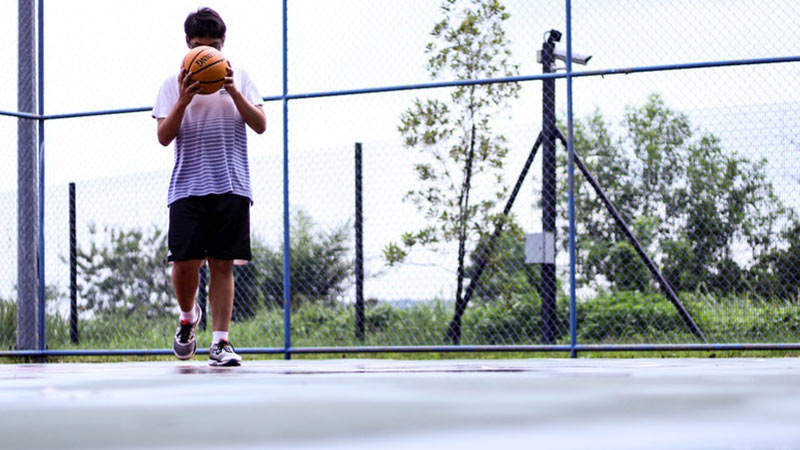Basketball is a fast-paced and dynamic sport that involves skillful dribbling, accurate passing, and precise shooting. While players strive to make every shot count, there are instances when a shot goes awry, missing the hoop entirely.
One such instance is when a player shoots the ball, and it fails to touch the rim, net, or backboard a phenomenon commonly known as an “air ball.” In this article, we will delve into what is an air ball in basketball, its implications, and how it affects the game.
What Is an Air Ball in Basketball?
In basketball, an air ball occurs when a player attempts a shot, but the ball does not make contact with any part of the basket. Instead, it sails through the air untouched, often resulting in disappointment for the shooter and his or her team.
The term “air ball” gained popularity because the ball seemed to glide through the air with no resistance or deflection from the hoop.
Air balls can happen for several reasons. Sometimes, a player might misjudge the distance to the basket, leading to an inaccurate shot. Other times, the player may be under pressure from a defender, causing them to rush the shot and lose their shooting form.
Fatigue, lack of focus, or poor technique can also contribute to air balls. When an air ball occurs during a game, it has immediate consequences. First and foremost, possession of the ball is awarded to the opposing team.
This is known as a turnover, and it can be quite disadvantageous for the team that shot the air ball. Not only does it deny them an opportunity to score, but it also allows the opposing team to gain possession and potentially score themselves.
Interestingly, while air balls are generally viewed as negative outcomes, they can also serve as learning opportunities. Coaches and teammates can analyze the reasons behind the air ball, such as shot selection, shooting form, or positioning, and provide constructive feedback to the player.
By addressing these aspects, the player can work on their weaknesses and develop a more consistent shooting technique.
Rules for an Air Ball
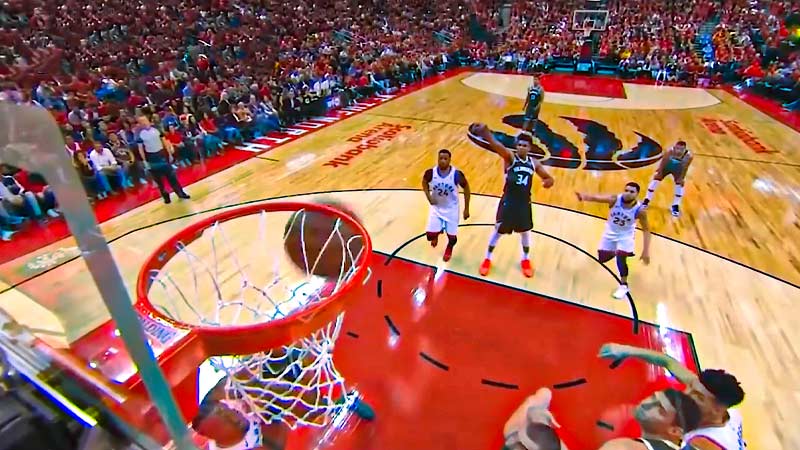
The rules for an air ball in basketball are relatively straightforward. Here are the key rules associated with an air ball:
Possession
When a player shoots an air ball, meaning the ball does not touch the rim, net, or backboard, possession of the ball is awarded to the opposing team. This is considered a turnover for the team that shot the airball.
Resetting Shot Clock
If an airball occurs and possession is awarded to the opposing team, the shot clock is not reset. The opposing team will have the remaining time on the shot clock from the moment they gain possession.
Out of Bounds
If an air ball goes out of bounds without being touched by any player, the opposing team is awarded possession from the sideline or baseline, depending on where the ball went out of bounds. This applies even if the ball does not touch the floor before going out of bounds.
Offensive Rebound
If a player from the same team catches an airball before it touches the floor, the shot clock does not reset, and the team maintains possession. The player who catches the air ball can attempt a new shot or pass the ball to a teammate.
Free Throws
In terms of free throws, if a player shoots an air ball on a free throw attempt, it is treated as a missed free throw. The opposing team will gain possession if the ball does not touch the rim, regardless of whether it touches the net or backboard.
It’s important to note that these rules may vary slightly depending on the specific league, level of play, or competition.
Different basketball organizations may have their own variations or modifications to the rules, but the general principles remain consistent across most basketball games.
What Makes Airballs Worse Than Regular Missed Shots?
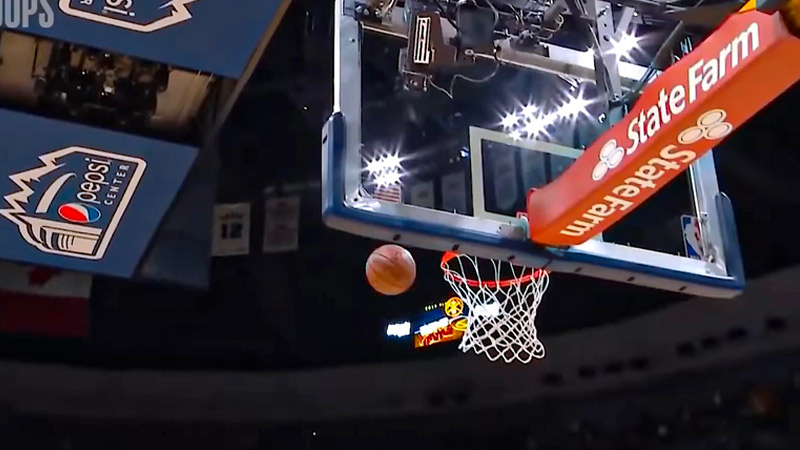
Air balls are often perceived as worse than regular missed shots for several reasons:
Lack of Rim Contact
Air balls are distinguished by the fact that the ball completely misses the rim, net, or backboard. This complete lack of contact indicates a significant misjudgment or poor execution of the shot, making it appear more glaring and embarrassing compared to shots that at least graze the rim.
Perception of Inaccuracy
Air balls are seen as a clear indication of a player’s inaccuracy or lack of shooting prowess. Missing the entire target implies a significant deviation from the intended trajectory and can lead to doubts about the shooter’s skill level or decision-making.
Turnover Consequences
When an air ball occurs, possession of the ball is awarded to the opposing team, resulting in a turnover for the shooting team.
This turnover not only denies them an opportunity to score but also provides the opposition with a chance to transition into offense, potentially leading to a quick and easy scoring opportunity for the other team.
Impact on Confidence
Shooting an airball can have a psychological impact on the shooter and the team as a whole. It can shake the shooter’s confidence, leading to hesitation and self-doubt in future shot attempts.
Additionally, witnessing a teammate shoot an airball can dampen team morale, potentially affecting overall performance.
Spectator Reaction
Air balls tend to draw strong reactions from spectators, both in the arena and watching from home. The crowd may react with jeers, laughter, or disappointment, adding to the embarrassment for the shooter and the team.
The social pressure and scrutiny can further magnify the negative perception of air balls. While air balls may carry a heavier stigma, it’s important for players to understand that missed shots, including air balls, are a natural part of the game.
It’s crucial to maintain composure, learn from mistakes, and focus on improving shooting technique and decision-making rather than dwelling on the negative aspects of a single shot.
Can Air Balls Come From ANY Shot?
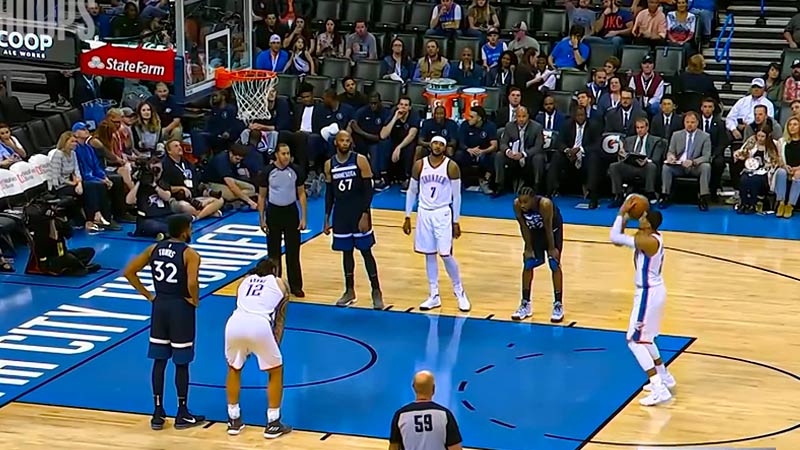
Technically, an air ball can come from any shot attempt in basketball. Whether it’s a layup, jump shot, three-pointer, or free throw, there is always a possibility of shooting an airball. However, the likelihood of an airball may vary depending on the type of shot being attempted.
For example, layups are typically close-range shots taken near the basket, and players often have a better sense of proximity, making airballs less common.
Jump shots, especially from mid-range or three-point range, involve a higher degree of difficulty and require precise shooting technique, making them more susceptible to air balls.
Free throws, despite being stationary shots, can also result in air balls. This can occur due to factors such as poor form, lack of focus, or even mental pressure. Although free throws are considered relatively easier shots, they can still lead to air balls if not executed properly.
It’s worth noting that air balls are generally less common among experienced and skilled players who have honed their shooting abilities through practice and repetition.
However, even the most accomplished players can occasionally shoot an airball due to a variety of factors, including defensive pressure, fatigue, or off-night shooting.
While air balls are not desirable outcomes, they are a part of the game. Players at all levels work to minimize air balls through continuous practice, improving shooting technique, and developing a better understanding of shot selection and execution.
Famous Air Ball Moments In The NBA
Airball moments in the NBA have become part of basketball lore, even among the most talented and accomplished players. Here are a few notable airball moments from NBA history:
Kobe Bryant – 1997 Playoffs
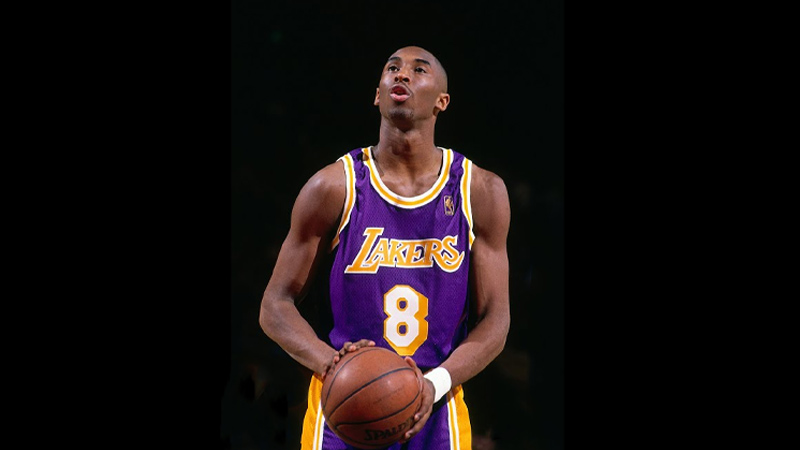
In the 1997 Western Conference playoffs, a young Kobe Bryant, then a rookie for the Los Angeles Lakers, had a memorable airball moment. In Game 5 of the series against the Utah Jazz, with the game tied and seconds remaining in overtime, Bryant attempted a game-winning shot that missed entirely.
Despite the miss, Bryant’s confidence remained unshaken, and he went on to have a legendary career.
LeBron James – 2010 Playoffs
During Game 2 of the 2010 Eastern Conference semifinals between the Cleveland Cavaliers and the Boston Celtics, LeBron James, widely considered one of the greatest basketball players of all time, had a critical airball moment.
With the game tied in the closing seconds, James attempted a potential game-winning shot that sailed wide of the mark. The Celtics eventually won the game in overtime.
Scottie Pippen – 1994 Playoffs
In Game 3 of the 1994 Eastern Conference semifinals between the Chicago Bulls and the New York Knicks, Scottie Pippen, a key member of the Bulls’ championship-winning teams, found himself in an airball situation.
With the Bulls down by one point and seconds remaining, Pippen attempted a three-pointer that missed everything, including the rim, giving the Knicks the victory.
J.R. Smith – 2018 NBA Finals
In Game 1 of the 2018 NBA Finals between the Cleveland Cavaliers and the Golden State Warriors, J.R. Smith, playing for the Cavaliers, had a highly publicized air ball moment.
With the game tied in the final seconds of regulation, Smith rebounded a missed free throw but seemingly forgot the score and dribbled the ball away from the basket. The Cavaliers ultimately lost in overtime.
Chris Webber – 1993 NCAA Championship
While not an NBA moment, Chris Webber’s airball moment in the 1993 NCAA Championship game is worth mentioning. Playing for the University of Michigan, Webber infamously called a timeout when the team had none remaining, resulting in a technical foul.
During the subsequent possession, Webber attempted a long two-point shot that missed, contributing to Michigan’s loss to the University of North Carolina.
These moments, while marked by air balls, do not define the careers of these players. They serve as reminders that even the greatest athletes can experience setbacks, and their responses to those moments often shape their legacies.
FAQs
Is an air ball considered a turnover in basketball? What Are The Rules For An Air Ball?
Yes, an air ball is considered a turnover in basketball. When a player shoots an air ball, meaning the ball doesn’t touch the rim, net, or backboard, possession of the ball is awarded to the opposing team. This turnover occurs because the offensive team failed to make a legitimate attempt at scoring.
Are air balls more common with certain types of shots?
Air balls can happen with any type of shot in basketball. Whether it’s a layup, jump shot, three-pointer, or free throw, there is always a possibility of shooting an air ball.
However, long-range shots such as three-pointers may be more prone to air balls due to the increased distance and the need for precise shooting accuracy.
Can an air ball still result in a successful play?
While it’s rare, there are situations where an air ball can still result in a successful play. If a teammate catches the air ball before it goes out of bounds or hits the floor, they can quickly shoot or pass the ball, potentially scoring before the defense can react.
This scenario, commonly known as a “putback,” can salvage a scoring opportunity despite the initial air ball.
Do professional basketball players ever shoot air balls?
Yes, even professional basketball players occasionally shoot air balls. Despite their high skill level, professionals are not immune to making mistakes. Air balls can occur due to a variety of factors, including defensive pressure, fatigue, or an off night shooting-wise.
The important thing is how players respond to these situations and continue to perform at a high level.
Are air balls more common among inexperienced or amateur players?
Air balls can happen to players of all skill levels. While inexperienced or amateur players may be more prone to shooting air balls due to a lack of refined technique or experience, even the most skilled and seasoned players can occasionally shoot an air ball.
It’s a part of the game that players at all levels work to minimize through practice and improvement in their shooting skills.
Final Words
Now you know what is an air ball in basketball? To summarize, an air ball in basketball refers to a missed shot in which the ball fails to touch the rim, net, or backboard. It can happen due to a variety of factors, including misjudgment, defensive pressure, fatigue, lack of focus, or poor technique.
When an air ball occurs, possession is awarded to the opposing team, and it can impact the shooter’s confidence and the team’s morale. However, players need to view air balls as opportunities for growth and learn from their mistakes.
With practice and determination, players can improve their shooting skills and reduce the occurrence of air balls, contributing to their overall success on the basketball court.

